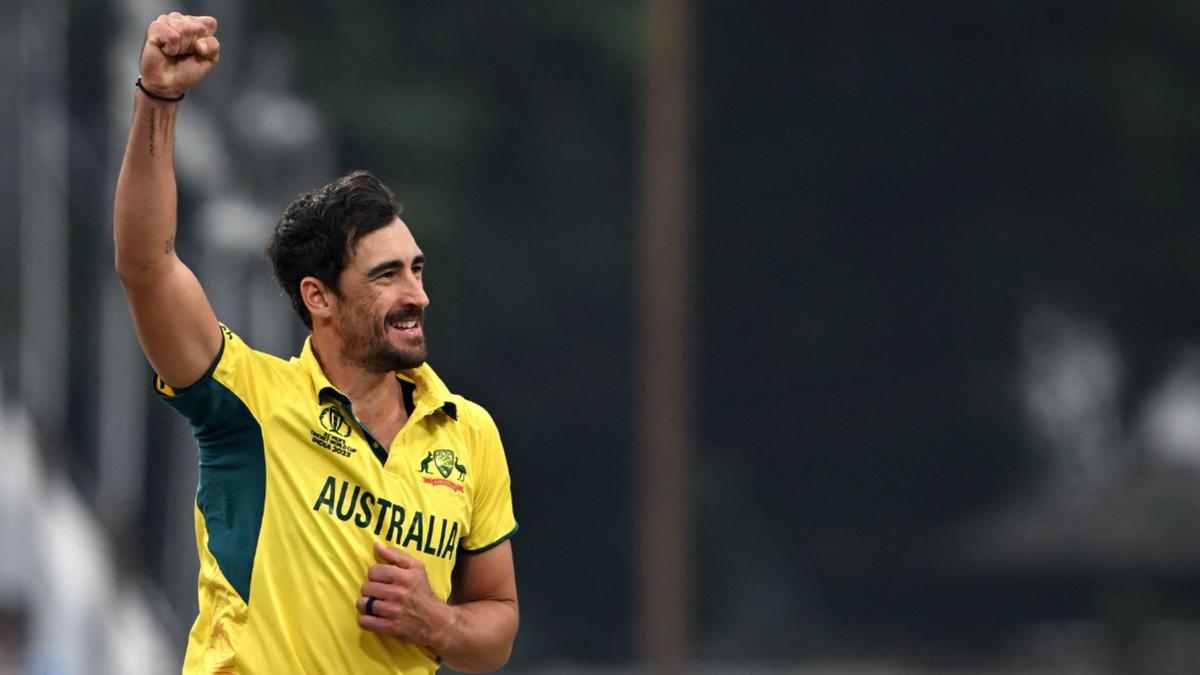
Mitchell Starc finally cashed in on his eight-year IPL abstinence yesterday (December 19) by becoming the most expensive buy in the competition’s history. After prioritising the longer formats over the last few years, it’s a reward that could easily have passed him by.
Subscribe to the Wisden Cricket YouTube channel for post-match analysis, player interviews, and much more.
Some of the big dollar buys from the 2024 auction were met with mild confusion. Daryl Mitchell, excellent but worth 14 crore? Similarly Pat Cummins, a 50-over World Cup winning captain but the first to break 20 crore? There was surprise over the eventual fees for both Mitchell and Cummins but with Starc, it was expected that one franchise would bid whatever was necessary to get him on their books.
Over £6,000 per delivery going into Starc’s bank account during the IPL is an absurd amount of money. But, if ten of those result in an off stump ripped out of the ground, a toe-crushing yorker clipped up on social media doing the rounds for days, he’s already halfway to earning his keep. If one of those off stumps belongs to Virat Kohli or Hardik Pandya looking for a six off the final ball to win a match, he’ll almost be up to the rest.
Starc has been the forgotten name of the IPL for several years. After playing in the 2014 and 2015 editions he went through a period of managing his workload. He had been ruled out of international cricket for almost a year in 2013/14 and suffered several other injuries in the following two years. The message from his body was clear, the longevity of his international career would have to come with extensive workload management, which would effectively rule him out of a long and lucrative franchise career.
This was no more evident than when he returned to the IPL auction for the 2018 edition and was bought by Kolkata Knight Riders. He was ruled out of the season before it began with a fractured tibia, which caused his longest injury break from cricket for three years.
Looking at Starc’s franchise T20 record, his prioritisation of international cricket means there’s little to analyse. He hasn’t played in the BBL since 2014, having played only ten matches in his own country’s franchise league. It’s worth noting he took 20 wickets in those matches at an average of 14.85. In the season he played for Yorkshire even further back in 2012, he took 21 wickets at an average of 10.38.
Paying more attention to the international front, his numbers don’t jump out as much as they do in the ODI format – in which he’s an undisputed all-time great. Since recovering from his significant injury in 2018 he’s played 36 T20Is and taken 43 wickets. For comparison, Josh Hazlewood has played two fewer T20Is than Starc in that timeframe and taken 50 wickets, at a better average, economy and strike rate.
His performances in the most recent T20 World Cups also don’t match up to the incredible highs he reached in the 2015 and 2019 ODI tournaments. He took nine wickets in Australia’s victorious 2021 campaign and went wicketless in the final. He also conceded 60 runs from his four overs in that game. For the 2022 competition, Starc lost his position as a new ball bowler, and lost his place entirely to Kane Richardson for the latter part of the group stage. At that point, Starc’s economy rate at the death had risen from 8.66 three years previously to 10.30 before he was dropped.
There’s an argument to say that Starc’s decision to sit out of franchise cricket has left him falling behind those who balance it alongside their international responsibilities. He has played just 38 T20s in the last eight years in an era where it is not uncommon for the best T20 cricketers to play in excess of 50 games a year.
Even looking at the 2023 World Cup, while he’s now part of the select few with multiple 50-over trophies to his name, his yorker didn’t seem as pinpoint as previously, and his economy was the worst of the three frontline Australia seamers.
That’s not to say that the reason Starc went for so much money because franchises view him still in his prime 2015 era. A quirk of this mini-auction saw few top-tier fast-bowlers up for grabs. Cummins was the other premium pacer on display while Spencer Johnson, who hadn’t played professional T20 cricket until January this year fetched 1o crore. For franchises who were after marquee quicks, there was little to choose from.
Couple that with several franchises having significant portions of their purse to spend, and a spending spree to get the best on offer was inevitable. KKR had very few pace options before they picked up Starc, and their main target in the auction was to rectify that. They also later picked up Gus Atkinson for 1 crore to boost their ranks. Gujarat Titans, who pushed KKR over the 24 Crore mark, ended up paying a huge sum for Johnson later. Starc hasn’t only timed his IPL return right for managing his workload, he’s also happened to pick the right auction to maximise his financial reward in the latter stages of his career.
These warnings all fade into the background in the shadow of the record-breaking paycheque headlines and the possibility of a fairytale return to the IPL, for a bowler who’s won every trophy on offer. Doing everything ‘right’, prioritising international cricket, and Test cricket above all else, has quite literally paid off, even if it is the idea of Starc rather than the current reality that’s earned him such a huge cheque.








